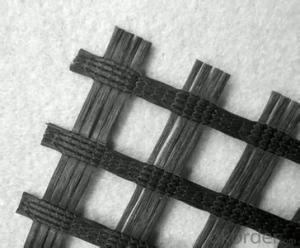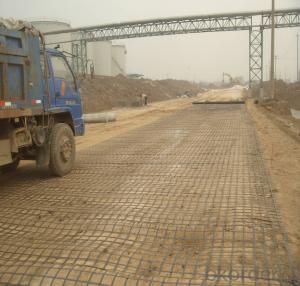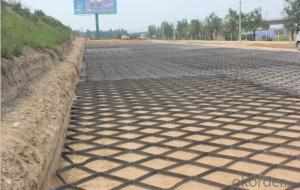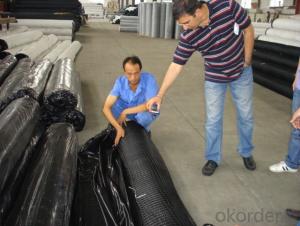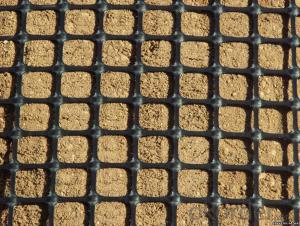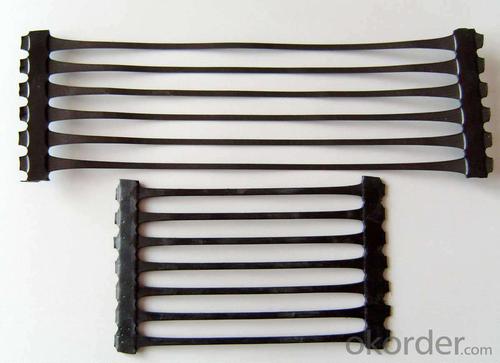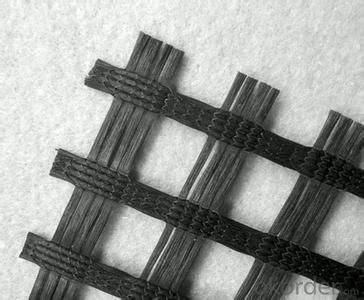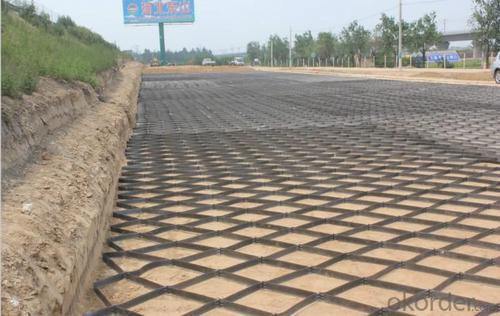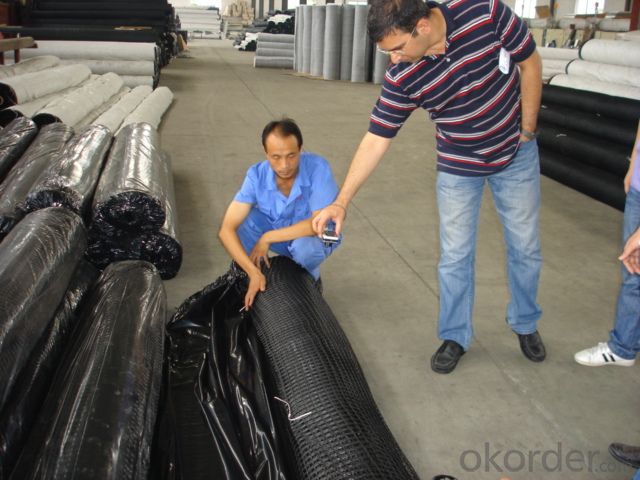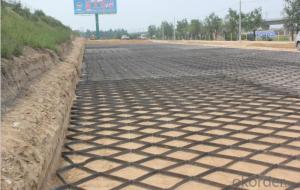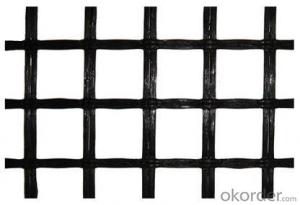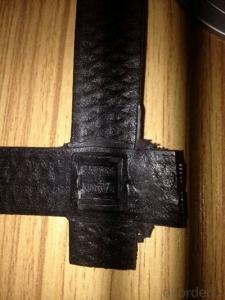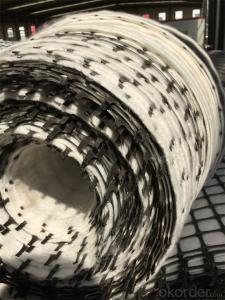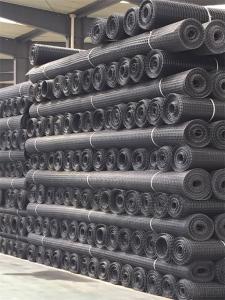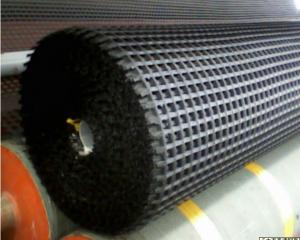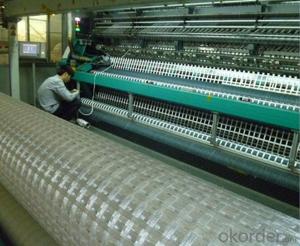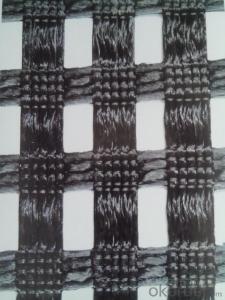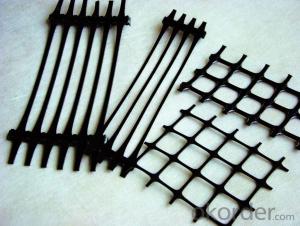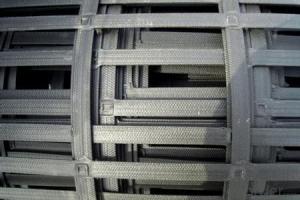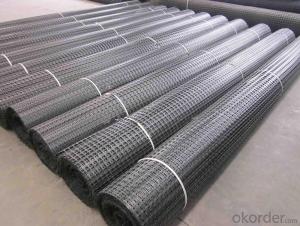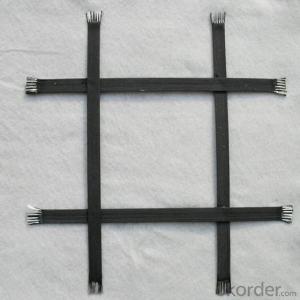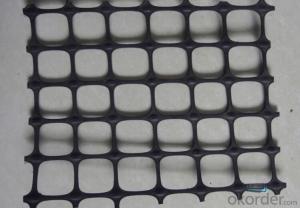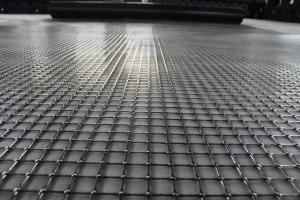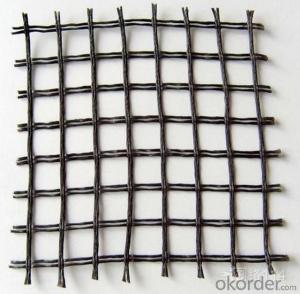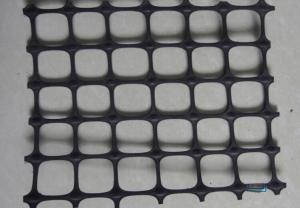Soil Stabilisation Geogrids - Polyester Warp-Knitting Geogrids
- Loading Port:
- China main port
- Payment Terms:
- TT OR LC
- Min Order Qty:
- 10000 m²
- Supply Capability:
- 100000 m²/month
OKorder Service Pledge
OKorder Financial Service
You Might Also Like
Description: From Okorder.com, you could find polyester geogrids, then please find more details about fiberglass geogird and make an inquiry for polyester geogrids at here.
We specilize in polyester geogrid industry for more than ten years. There are many different polyester geogrid elongations, which could meet your project requirement. According to different projects, we could recommand you different polyester geogrid.
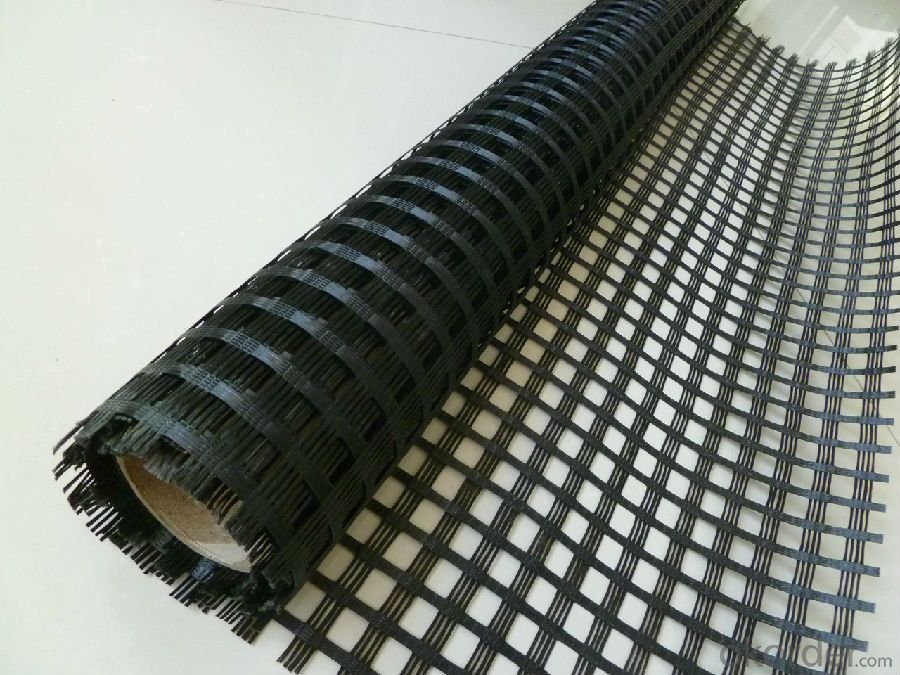
Polyester Geogrid Introduction
Polyester geogrid is a kind of new favorable earthwork base material to strengthen the road surface and roadbed. This product is made by weaving and covering polyester filament. It is featured by high vertical and horizontal tensile strength, low unit extension, high flexibility, and favorable high and low temperature resistance. The products after surface covering own the favorable property of alkali resistance and aging resistance
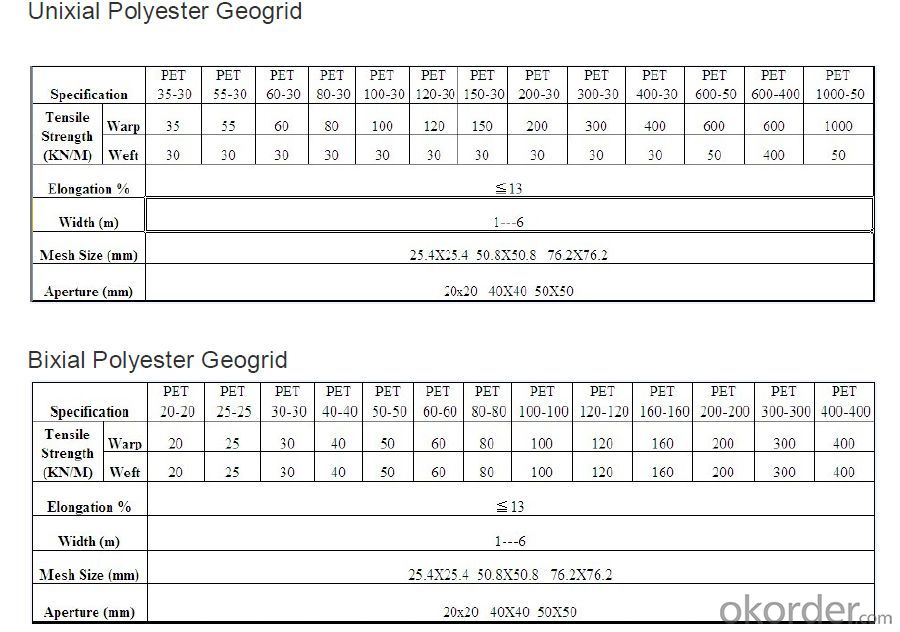
Polyester Geogrid Features :
1. Polyester geogrid for soil reinforcement
2. Pavement subgrade stabilization
3. Area /Ground stabilization
4. Pavement base reinforcement
5. Working & load transfer platforms
6. Rail Track-bed stabilization
7. Reinforced granular foundation beds
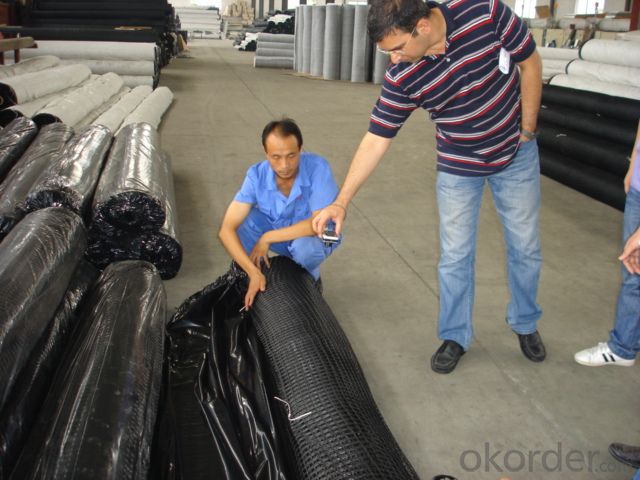
Polyester Geogrid PROPERTIES
1. High tensile strength in both the warp and weft directions;
2. Low elongation;
3. Excellent temperature range;
4. Good anti-age and alkali-resistance;
5. Reduce construction cost, extend service life of road and prevent deflection cracks.
FAQ:
Q: What kind of payments does jenor support?
A: T/T, L/C, Cash are accepted.
Q: Do you charge for the samples?
A: Accordeing to our company policy, the samples are freee, we only charge the freight fee. And we will return the freight fee during the next order.
Q: Can you produce according to customers' design?
A: Sure, we are professional manufacturer, OEM and ODM are both welcome.
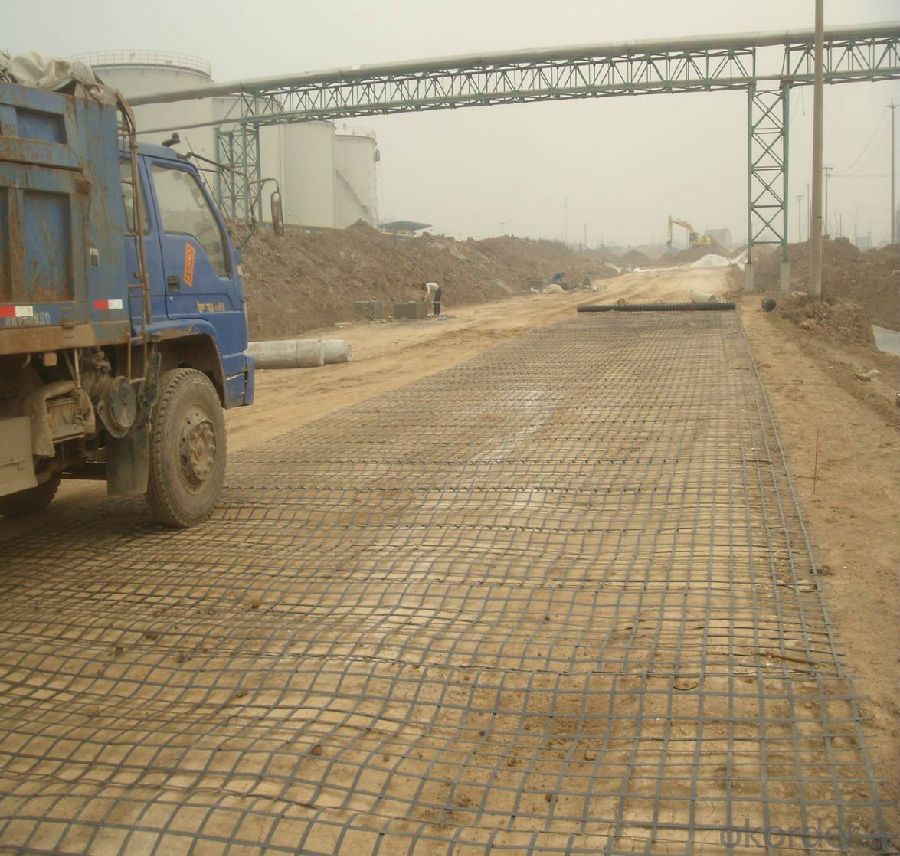
If you want to find more details about the fiberglass geogrid, you could make an Inquiry in okorder.com. Okorder.com provides you the products with best price and quality!
- Q: How do geogrids improve the performance of mechanically stabilized slopes?
- Geogrids improve the performance of mechanically stabilized slopes by providing reinforcement and stability to the soil. They act as a reinforcement layer within the slope, distributing and transferring loads more effectively. This helps to prevent soil movement and sliding, reducing the risk of slope failure. Geogrids also enhance soil compaction, increase shear strength, and improve overall slope stability, making them an essential component in the construction of mechanically stabilized slopes.
- Q: Can geogrids be used in soil stabilization for sports fields?
- Yes, geogrids can be used in soil stabilization for sports fields. Geogrids are commonly used in various applications, including reinforcing and stabilizing soil. They can effectively enhance the load-bearing capacity of the soil, reducing the risk of subsidence and improving the overall stability of the sports field.
- Q: What are the factors that affect the tensile strength of geogrids?
- The factors that affect the tensile strength of geogrids include the polymer type and quality, the manufacturing process, the grid structure and aperture size, the direction of loading, the environmental conditions, and the level of interface friction between the geogrid and the surrounding soil or other materials.
- Q: How do geogrids prevent lateral spreading of soil?
- Geogrids prevent lateral spreading of soil by providing reinforcement and increased stability to the soil structure. When placed within the soil, geogrids distribute the tensile forces and restrict the movement of soil particles, reducing the potential for lateral movement. The interlocking of the geogrids with the soil creates a stronger composite material, preventing the soil from spreading laterally and maintaining its integrity.
- Q: Can geogrids be used in slope stabilization for mining waste dumps?
- Yes, geogrids can be used in slope stabilization for mining waste dumps. Geogrids are commonly used in civil engineering projects to reinforce and stabilize slopes. By incorporating geogrids into the design and construction of mining waste dumps, the stability of the slopes can be improved, preventing potential slope failures and reducing the risk of environmental hazards.
- Q: How do geogrids help in reducing the risk of soil liquefaction?
- Geogrids help in reducing the risk of soil liquefaction by reinforcing the soil and improving its stability. They provide additional strength and prevent the soil from losing its strength and becoming liquefied during earthquakes or other dynamic loading events.
- Q: Are geogrids suitable for reinforcing slope stabilization mats?
- Yes, geogrids are suitable for reinforcing slope stabilization mats. Geogrids provide additional strength and stability to the mats, helping to prevent soil erosion and maintain the integrity of the slope.
- Q: What is the effect of creep on geogrid performance?
- The effect of creep on geogrid performance is that it can cause the geogrid to gradually deform and lose its original shape and strength over time. This can result in reduced load-bearing capacity and overall effectiveness of the geogrid in stabilizing soil or reinforcing structures. Therefore, creep should be considered and accounted for in the design and selection of geogrids to ensure long-term performance and durability.
- Q: What are the differences between geogrids and geonets?
- Geogrids and geonets are both geosynthetic materials used in civil engineering and geotechnical applications, but they have distinct differences. Geogrids are typically composed of high-strength polymers or fiberglass with a grid-like structure, offering tensile reinforcement to soil or other materials. They are primarily used for soil stabilization, slope reinforcement, and retaining wall construction. On the other hand, geonets are three-dimensional, open-mesh structures made of polymer materials. Geonets provide drainage and filtration capabilities, making them suitable for applications such as landfill leachate collection, erosion control, and gas venting. While geogrids focus on soil reinforcement, geonets specialize in drainage and filtration functions.
- Q: What are the properties and characteristics of geogrids?
- Geogrids are synthetic materials with high tensile strength, used in civil engineering and construction projects. They are typically made from polymers such as polyester or polypropylene and have a grid-like structure. The properties and characteristics of geogrids include: 1. Tensile Strength: Geogrids possess high tensile strength, allowing them to withstand heavy loads and distribute stress efficiently. This property makes them suitable for applications such as soil stabilization and reinforcement. 2. Aperture Size: Geogrids have a grid-like structure with different aperture sizes, which can vary based on the intended use. The aperture size determines the amount of soil interlock and confinement provided by the geogrid. 3. Flexibility: Geogrids exhibit flexibility, enabling them to conform to the shape of the terrain or structure they are applied to. This flexibility allows for easier installation and adaptability to different project requirements. 4. Durability: Geogrids are designed to be highly durable and resistant to environmental conditions such as ultraviolet (UV) radiation, chemical exposure, and biological degradation. This durability ensures the long-term performance and lifespan of geogrids in various applications. 5. Installation Ease: Geogrids are generally lightweight and easy to handle, facilitating their installation. They can be rolled out or placed directly onto the ground, minimizing the time and effort required for construction. 6. Soil Interaction: Geogrids enhance the interaction between soil particles, increasing their shear resistance and improving overall stability. This property is especially beneficial in applications like retaining walls, slopes, and roadways. 7. Drainage Capability: Some geogrids have a porous structure that allows for water drainage, preventing the buildup of hydrostatic pressure and reducing the risk of soil erosion. Overall, geogrids offer a range of beneficial properties and characteristics that make them versatile and effective in various civil engineering and construction applications.
Send your message to us
Soil Stabilisation Geogrids - Polyester Warp-Knitting Geogrids
- Loading Port:
- China main port
- Payment Terms:
- TT OR LC
- Min Order Qty:
- 10000 m²
- Supply Capability:
- 100000 m²/month
OKorder Service Pledge
OKorder Financial Service
Similar products
Hot products
Hot Searches
Related keywords

